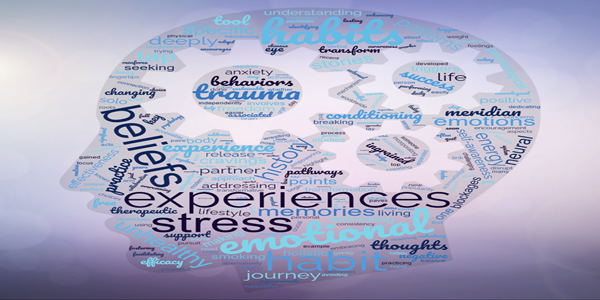In the pursuit of a healthier lifestyle, individuals often find themselves wrestling with deeply ingrained habits that seem resistant to change. From unhealthy eating patterns to sedentary behaviors, breaking free from these habits can be a challenging journey.
One powerful tool that has gained popularity in recent years for its efficacy in facilitating habit transformation is Emotional Freedom Technique (EFT), also known as tapping. In this article, we will explore the connection between emotional well-being, habits, and how EFT tapping sessions can serve as a mechanism for positive change, making it easier for individuals to embrace healthier living.
Understanding Emotional Freedom Technique (EFT)
EFT is a holistic therapeutic approach that combines elements of traditional Chinese medicine with modern psychology. Developed by Gary Craig in the 1990s, EFT involves tapping on specific meridian points on the body while focusing on negative emotions, thoughts, or behaviors.
The technique aims to release energy blockages and restore balance to the body’s energy system. Today, we know more about how EFT works on a neurological level and our understanding has expanded.
The Link Between Emotions and Habits

Many bad habits are deeply rooted in emotional experiences and coping mechanisms. Stress, anxiety, boredom, and other emotions often trigger unhealthy habits such as overeating, smoking, or avoiding exercise.
EFT addresses this emotional component by helping individuals acknowledge and release the underlying emotions associated with their habits.
Breaking the Emotional Attachments
EFT acts as a bridge between the emotional and physical aspects of bad habits. By tapping on meridian points, individuals can disrupt the emotional patterns linked to their habits. This tapping process is believed to send calming signals to the brain’s amygdala, reducing the emotional intensity of the attachment and promoting relaxation and emotional balance.
For example, someone trying to quit smoking may use EFT to address the anxiety or stress that triggers the urge to smoke. By breaking the emotional attachment to the habit, EFT paves the way for more sustainable change.
EFT encourages individuals to verbalize and accept their emotions without judgment, facilitating a sense of detachment and perspective. By repeatedly tapping on the acupressure points while acknowledging and releasing the emotional attachment, individuals can gradually diminish its hold over their thoughts and behaviors, leading to greater emotional freedom and resilience.
Creating New Neural Pathways
EFT (Emotional Freedom Techniques) is believed to create new neural pathways through a process known as memory reconsolidation, which involves updating and modifying existing memories and associations in the brain.
When we experience stress, anxiety, or trauma, our brains form neural pathways associated with those negative emotions and experiences. These neural pathways can become deeply ingrained over time, leading to patterns of thought and behavior that perpetuate feelings of distress.
EFT involves gentle tapping on specific acupressure points on the body while focusing on the negative emotion or issue at hand. This tapping process is thought to stimulate the body’s energy meridian system, which is based on the principles of traditional Chinese medicine. By tapping on these points, EFT is believed to send calming signals to the amygdala, the part of the brain responsible for processing emotions and triggering the body’s stress response.
As the individual taps on the acupressure points while focusing on the negative emotion, the brain is thought to undergo a process of memory reconsolidation. This process involves accessing the memory associated with the negative emotion and updating it with new, more positive associations. Through repeated tapping and focused attention, EFT is believed to help neutralize the emotional charge of the memory and create new neural pathways that are less associated with stress and anxiety.
Over time and with consistent practice, these new neural pathways can become strengthened, leading to a shift in perception and behavior. Individuals may find that they are better able to cope with stressors, manage their emotions, and respond more effectively to challenging situations. This process of creating new neural pathways through EFT can contribute to greater emotional resilience, improved well-being, and a greater sense of inner peace.
Enhancing Self-Awareness
EFT encourages introspection and self-awareness. Through the tapping process, individuals become more attuned to their emotions and the thoughts driving their habits.
This heightened awareness is a crucial first step in the journey toward healthier living, as it allows individuals to make conscious choices and break free from automatic, unhealthy behaviors.
-
Mind-Body Connection: EFT involves gentle tapping on specific acupressure points while focusing on negative emotions, thoughts, or behaviors. This process encourages individuals to tune into their body’s sensations and emotional responses, fostering a deeper connection between mind and body. By paying attention to how certain thoughts or emotions manifest physically during the tapping process, individuals can gain insight into the underlying triggers and patterns associated with their bad habits.
-
Identifying Triggers: As individuals engage in EFT tapping and focus on their negative emotions or behaviors, they may become more aware of the specific triggers that contribute to their bad habits. Whether it’s stress, boredom, anxiety, or other emotional triggers, EFT provides a structured framework for identifying and exploring the underlying factors that drive certain behaviors. By recognizing the triggers that precede their bad habits, individuals can develop greater self-awareness and begin to address these underlying issues more effectively.
-
Challenging Limiting Beliefs: EFT involves tapping on acupressure points while verbalizing statements that acknowledge and accept negative emotions or beliefs. Through this process, individuals can challenge and reframe limiting beliefs or negative self-talk that may be contributing to their bad habits. By actively engaging with these beliefs during the tapping process, individuals can gain insight into the underlying thought patterns that drive their behavior and begin to cultivate a more positive and empowering mindset.
-
Exploring Emotional Resonance: EFT encourages individuals to explore the emotional resonance of their bad habits and how they impact their overall well-being. By tapping on specific acupressure points while focusing on the negative emotions associated with their habits, individuals can gain a deeper understanding of the emotional drivers behind their behavior. This increased self-awareness can help individuals recognize the true costs and consequences of their bad habits, motivating them to make positive changes in their lives.
EFT Case Studies and Success Stories
Numerous case studies and success stories attest to the effectiveness of EFT in habit change.
From weight loss to overcoming addictive behaviors, individuals worldwide have reported significant improvements in their well-being after incorporating EFT into their routines.
These success stories highlight the transformative power of addressing the emotional roots of bad habits through tapping. Many studies have delved into the efficacy of EFT as a transformative tool for changing habits.
To hear more about case studies, contact Sarah DeFelice today for a chat on how EFT can change your bad habits.
You Can Do EFT by Yourself or with a Partner

Performing EFT can be a personal and empowering experience that can be done independently or with a supportive partner. To practice solo, begin by identifying the specific emotion or habit you want to address.
- Using your fingertips, gently tap on key meridian points on your body, such as the top of the head, eyebrows, side of the eye, under the eye, under the nose, chin, collarbone, under the arm, and on the side of the hand.
- While tapping, focus on the emotion or habit you’re addressing, acknowledging any associated thoughts or feelings.
State your concerns or challenges out loud during the process.
Alternatively, practicing EFT with a partner involves one person tapping on their own points while the partner provides verbal support or encouragement.
This collaborative approach can enhance the effectiveness of the technique, fostering a shared sense of emotional release and support. A certified health and well-being coach can guide you through EFT tapping and discuss your thoughts and feelings before and after the session.
Whether solo or with a partner, consistency and mindful attention to emotions are key to harnessing the full benefits of Emotional Freedom Technique. EFT is a versatile technique that can be easily integrated into daily life. Whether used as a standalone practice or in conjunction with other therapeutic approaches, individuals can tap into the benefits of EFT by dedicating a few minutes each day to the practice.
The accessibility of EFT makes it a valuable tool for those seeking a holistic approach to habit transformation.
What are the Finger Points for Tapping?
The Emotional Freedom Techniques (EFT) tapping points are specific acupressure points on the body that are stimulated by gently tapping with the fingertips. Here are the primary tapping points used in EFT:
-
Karate Chop Point (KC): This point is located on the fleshy outer edge of the hand, between the base of the small finger and the wrist. It’s often used as the starting point for EFT sequences and is tapped with the fingertips of the opposite hand.
-
Top of the Head (TH): This point is located at the crown of the head, in the center. It’s often used to address general issues or to set intentions for the tapping sequence.
-
Eyebrow Point (EB): This point is located at the beginning of the eyebrow, near the bridge of the nose. It’s tapped with the fingertips, where the eyebrow begins on the inner side of the eye socket.
-
Side of the Eye (SE): This point is located on the bone at the outer corner of the eye, along the temple. It’s tapped with the fingertips, directly on the bone.
-
Under the Eye (UE): This point is located on the bone directly beneath the center of the eye. It’s tapped with the fingertips, directly on the bone.
-
Under the Nose (UN): This point is located in the indentation between the nose and the upper lip. It’s tapped with the fingertips, in the crease between the nose and the upper lip.
-
Chin Point (CP): This point is located in the crease between the lower lip and the chin. It’s tapped with the fingertips, in the center of the chin.
-
Collarbone Point (CB): This point is located on the collarbone, about an inch down and to the side from the center of the throat. It’s tapped with the fingertips, either on one side or both sides simultaneously.
-
Under the Arm (UA): This point is located about four inches below the armpit, along the bra line (for women) or at the nipple line (for men). It’s tapped with the fingertips, on the side of the body.
Use EFT for Bad Habits
Embracing a healthier lifestyle involves more than just changing external behaviors; it requires addressing the emotional and psychological factors that underlie habits.
Emotional Freedom Technique (EFT) offers a unique and effective pathway to transform habits by loosening unconscious patterns and allowing you to lay down new neural pathways.
As individuals tap into their emotions and release the energy blockages associated with unhealthy habits, they pave the way for lasting positive change. Through the power of EFT, the journey to a healthier life becomes not only possible but also more accessible and sustainable for individuals seeking transformation.
Everyone is different. Let’s talk about how EFT can transform your bad habits. Book a free consultation today.


